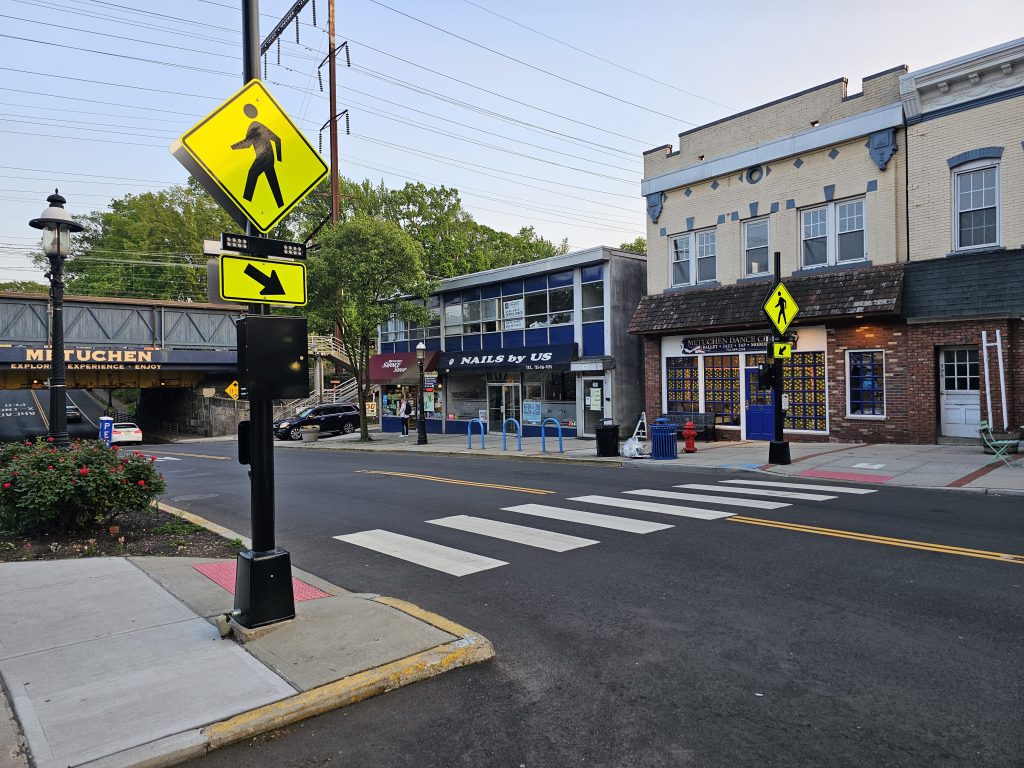In December 2024, the New Jersey Department of Transportation (NJDOT) updated its internal Complete Streets Policy, demonstrating continued commitment to enhancing roadway safety for New Jersey’s transportation system. The policy is designed to “provide safe access for all users by integrating Complete Streets into the planning, design, construction, maintenance, and operation of all new, rehabilitated, and retrofitted transportation facilities, public highways, and public transportation projects” that are funded or administered by NJDOT.[1] This policy represents a significant evolution from NJDOT’s landmark 2009 policy, reflecting over a decade of experience, feedback, and new priorities in transportation planning.
Complete Streets are designed to accommodate the needs of all users, especially those outside of a motor vehicle. NJDOT’s 2009 policy covered several key benefits of Complete Streets, focusing on improving safety for vulnerable groups such as children and older adults, promoting walking and bicycling, and enhancing public health and livability by creating more connected and accessible communities.

The adoption of NJDOT’s 2024 Complete Streets Policy builds upon their 2009 policy by more fully integrating Complete Streets into the Department’s standard operating procedures and incorporating best practices and trends in Complete Streets planning and implementation that have emerged since 2009. Below are some highlights of the new policy:[2]
- Expanded Definition of Users: Beyond providing safe access for pedestrians, bicyclists, and other vulnerable road users, the 2024 policy includes individuals with mobility impairments and persons diagnosed with autism spectrum disorder and/or intellectual and developmental disabilities (ASD/IDD). In addition, the new policy emphasizes the consideration and development of universal design elements to promote independent travel for individuals with ASD/IDD.
- Comprehensive Solutions Approach: Importantly, the 2024 policy introduces a tiered “Comprehensive Solutions Approach” with Type A, B, and C solutions, ranging from high-effort construction projects to simpler, cost-effective fixes like pavement markings and signage. This offers a scalable framework for addressing infrastructure needs at different levels of complexity and funding availability and is an important step toward ensuring the implementation of Complete Streets across New Jersey.
- Performance Measures and Tracking: Under the new policy, NJDOT’s Bureau of Safety, Bicycle, and Pedestrian Programs (BSBPP) is responsible for establishing Complete Streets performance measures and tracking implementation progress.
- Comprehensive Planning for Future Demand: The 2024 policy emphasizes the need to plan transportation facilities as long-term investments, accommodating future land use demand for safe and accessible bicycling, walking, and transit facilities.
In addition to strengthening the policy itself, NJDOT has made available several resources for practitioners that will advance the implementation of Complete Streets across the state. These include Complete Streets guidance documents produced by both NJDOT and national agencies and organizations.
One of the standout features of the 2024 policy is the introduction of the Complete Streets Comprehensive Solutions Handbook. The Handbook provides clear, actionable procedures for integrating Complete Streets principles across various project types. It includes detailed guidance on assessing community needs and roadway conditions, selecting appropriate design solutions for different contexts, and addressing challenges such as funding constraints.
To institutionalize the policy further, NJDOT has developed a Standard Operating Procedure (SOP) for Complete Streets. The SOP ensures consistency in applying the policy across all NJDOT projects. It mandates the use of updated checklists and documentation at each phase of project delivery, fostering accountability and transparency.
The new policy also includes New Exemption Criteria for projects. While the 2009 policy allowed exemptions under specific conditions, the 2024 update introduces a more rigorous process for granting them. Exemptions, which are detailed in the Comprehensive Solutions Handbook, must now be supported by comprehensive data and undergo thorough review by NJDOT’s Capital Program Screening Committee. This ensures that exemptions are granted only when absolutely necessary, preventing misuse and maintaining policy integrity.
Additionally, Complete Streets Checklists are tailored to specific project delivery phases, such as planning, design, and construction. These checklists help NJDOT project managers systematically evaluate Complete Streets considerations on state roads and ensure compliance with the policy. By embedding these tools into NJDOT’s workflows, the policy becomes an integral part of the Department’s operations.
The adoption of the 2024 Complete Streets Policy represents a transformative moment for New Jersey’s statewide transportation system. By fully integrating Complete Streets into its standard procedures, NJDOT sets a national example for how state agencies can create safer transportation networks. An institutionalized approach to safety will contribute to healthier, more vibrant communities in New Jersey. With a stronger policy, NJDOT reaffirms its commitment to Complete Streets and their dedication to the safety and well-being of New Jersey residents.
Additional information on NJDOT’s updated Complete Streets Policy can be found on their Complete Streets page, which includes the new policy, implementation guidance, and additional resources such as design guides from the Federal Highway Administration (FHWA), the American Association of State Highway and Transportation Officials (AASHTO), and the National Association of City Transportation Officials (NACTO).
[1] NJDOT (2024). Policy #703 – Complete Streets
[2] NJDOT (2024). Policy #703 – Complete Streets
